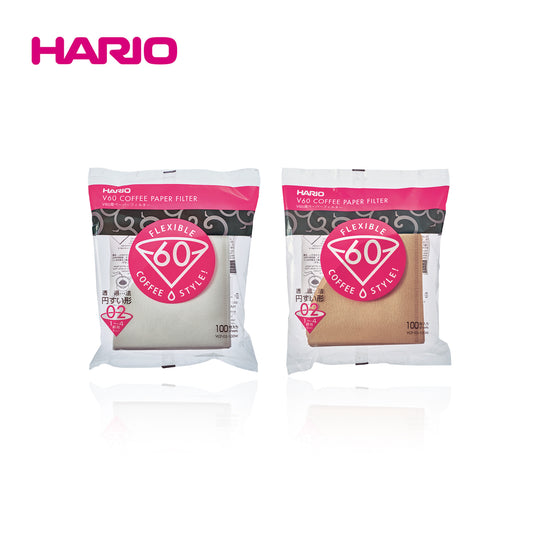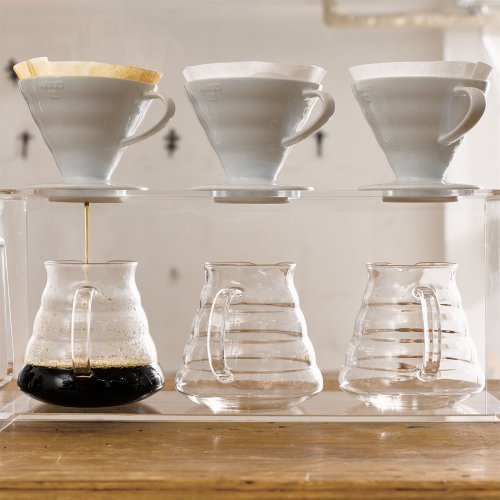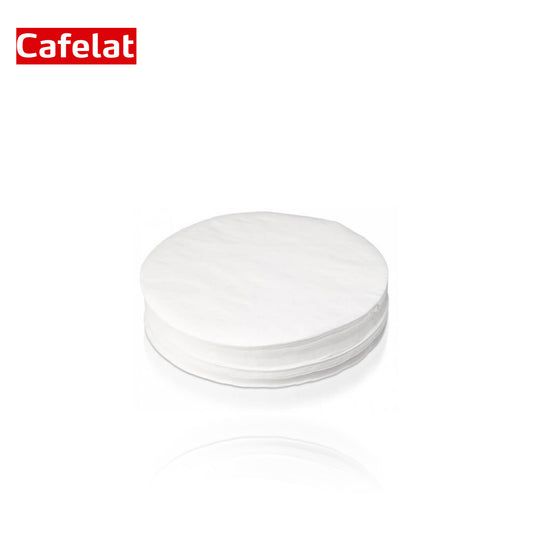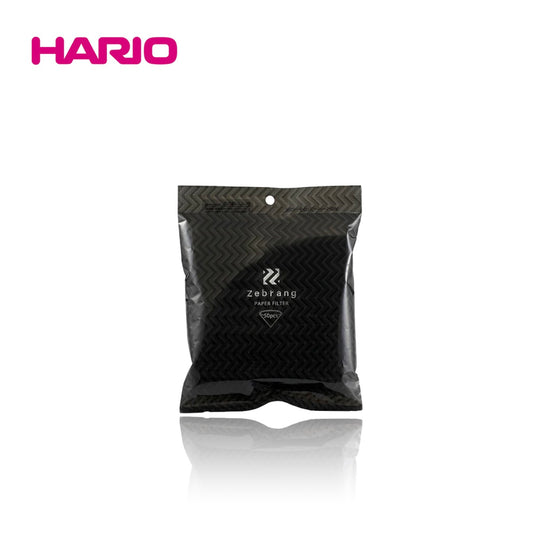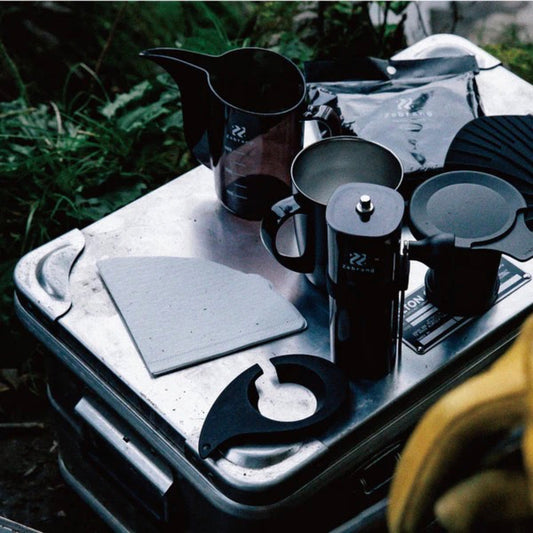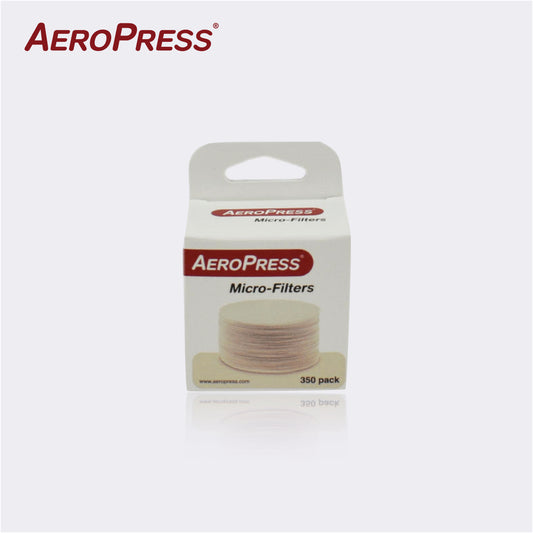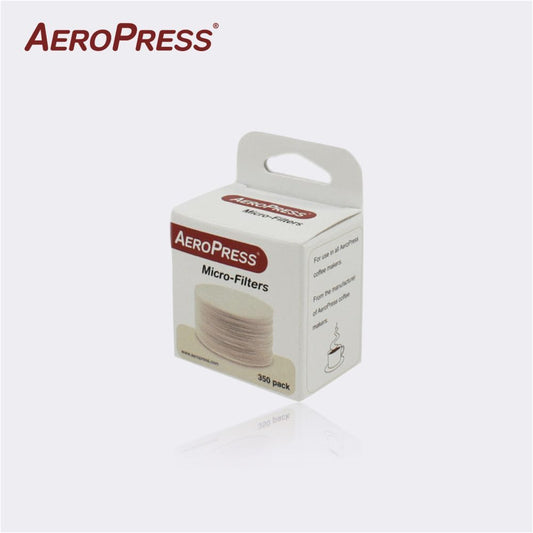-
Hario V60 Coffee Paper Filter Size 01 / 02 (100 count)
Vendor:HarioRegular price From $7.90 SGDRegular priceUnit price / per -
Hario V60 Coffee Paper Filter Size 01 / 02 (100 count)
Vendor:HarioRegular price From $7.90 SGDRegular priceUnit price / per -
Cafelat Robot Filter Papers (100 pcs)
Vendor:CafelatRegular price $10.00 SGDRegular priceUnit price / per -
Hario V60 Coffee Paper Filter 01 / 02 Size (40 count) - White
Vendor:The Brew TherapyRegular price $4.90 SGDRegular priceUnit price / per -
Hario V60 Coffee Paper Filter 01 / 02 Size (40 count) - Natural
Vendor:The Brew TherapyRegular price $4.90 SGDRegular priceUnit price / per -
Hario V60 Paper Filter 02 White (50 pcs)
Vendor:HarioRegular price $4.50 SGDRegular priceUnit price / per -
AeroPress Micro Filters (350 pcs)
Vendor:AeropressRegular price $8.50 SGDRegular priceUnit price / per
Collection: Coffee Filter
Buy Coffee Filter Papers in Singapore
Behind every cup of pour-over coffee is an arduous process of carefully selected beans, well-grinded roasts and practised pouring. Of course, this delicate process would not be completed without cafe equipment and supplies — that includes beans, a coffee bean grinder, a dripper, some hot water, and most importantly, paper filters.
While not mentioned or heard as often as their supplies counterparts, this inconspicuous piece of paper is responsible for ensuring that every cup of joe turns out smooth, aromatic and flavourful. And without having to visit a fancy cafe, paper filters can help you to create the perfect brew right in the comfort of your home.
What exactly are coffee machine filter papers?
As the name suggests, the filters are a piece of paper that aids in your coffee-brewing process. They are often accompanied by the “pour-over” method (also known as the drip method) or fitted into your machines. As the filters are made from paper, they are the most common type of material used.
Coffee maker filter papers can be found in a myriad of sizes and shapes, and in varying colours as well. From bleached white to soft brown bamboo or even unbleached and natural brown, they all yield the same purpose — that is, to create the perfect cup of joe.
With paper, the filters are tightly woven to trap oils and sediment that result from the brewing process. Filter papers are also highly absorbent, which makes them the perfect solution to catch any other unwanted particles found during the brewing process.
Through an intricate filtering process, your beans will be infused with the right minerals and acids to create a perfectly balanced cup of joe. But that’s not all, by filtering your beans properly, you’re able to create a cleaner, lighter and brighter taste. With lesser unwanted condiments, your beans would naturally take in more minerals to create that crispy mouthfeel too.
Types of coffee maker filter papers
Filter paper can be found in a myriad of sizes and shapes, and in varying colours as well. For colours, they range from bleached white to soft brown bamboo or even unbleached and natural brown, but all yield the same purpose — that is, to create the perfect cup of joe.
For shapes, there are generally three types to keep in mind — Cone, basket and disc filters. Many of us would be familiar with cone filters by now. By nature of its name, cone-shaped coffee paper filters come in the form of cone shapes. They have a wide opening at the top that gradually reduces to a closed tip at the end. As one of the easily accessible paper filters, they can be seen used commonly in home drip coffeemakers or used by hand in pour-over coffees.
For basket paper filters or flat-bottom coffee paper filters, they mimic the likeness of a woven basket with curly cues at the side, along with a flat base. They can also be found commonly in home drip coffeemakers but it does have a drawback. If you have uneven grounds, one might result in an under-extracted beverage or even one that tastes bitter.
The third type is disc paper filters. As the name describes, it comes in a circular shape with a hole in the middle of the filter. Due to their flat structure, disc filters are typically used in makers and not in pour-over methods. But there’s a plus side to this. With disc filters, you’re able to experiment with medium to coarse coffee grinds as the filters allow you a longer extraction time compared to cone or basket filters.
Coffee Filter Paper Sizes
When it comes to the sizes, it is crucial that you select a filter-based on the number of cups you’d like to serve. As each of them is sized by a number, it will help you determine how many cups you can brew with a single filter.
For instance, with # the number of cone filters, you’re able to brew the following amount of cups with your coffeemakers or with the pour-over method.
- 1 filter: 1 cup
- 2 filters: 2-6 cups from coffeemakers and 1-2 cups from pour-over
- 4 filters: 8-10 cups from coffeemakers and pour-over
- 6 filters: more than 10 cups from coffeemakers
However, for basket filters, you’ll want to keep in mind that they usually come in a standard size. In other words, unlike cone filters, a single basket filter allows you to brew 6 standard cups. If you’d like to make less than 6 cups, you may opt for a junior basket filter.
Other Benefits of Coffee Maker Filter Papers
Apart from producing an incredible cup of joe, they do so much more. As the filters are for single-use only, it means you need not spend time cleaning or washing the filters. After brewing, simply discard the filter together with your grounds. However, with single-use, it can be wasteful and not sustainable. For this, you can choose to opt for unbleached and bamboo paper filters, which are more eco-friendly choices.
And for the health-conscious drinkers out there, using paper filters is a great way to reduce your cholesterol level. By filtering out most oils and grounds, there will be a lesser amount of bile acids and neutral sterols. So you’ll still be able to enjoy without worrying about your cholesterol intake.
While paper filters have their upsides, it does have some downside too. But not to worry and this may go unnoticed if you’re not particular about the papery taste. And there’s also an easy solution for this.
Before using your filter, you’ll want to always give them a rinse before you start brewing. Or, before placing your grounds into the filter, drizzle it with water and flush it out. With the pre-rinse, you’re able to wash away this distracting flavour or minimise any papery taste.
How to use coffee maker filter papers?
If you’re new to the “pour-over” method or it is your first time trying out a paper filter, not to worry because we’ve got you covered with these few simple steps:
- Give your paper filter a pre-rinse and place it into a cup of your choice
- Pour in boiling water and soak it for preparation
- Flush out any excess liquid
- Place the grounds into your paper filter
- In a circular motion, pour boiling water over your grounds
- Let it soak for a few minutes and enjoy!
And if you prefer to use machines, look out for the instructions manual and place your paper filter in the right section of your machine. Be wary of where the hot water goes as well to avoid scalding yourself.
Our Biodegradable Coffee Filter Papers in Singapore
Now that you know the ins and outs, let us introduce you to some handy products. Regardless of what paper filter you choose, be mindful to always follow the given instructions so that you can create the perfect cup.

Featuring 58mm thin white filter papers, the Cafelat Robot Filter Papers helps to reduce channelling and improve the extraction yield of your shots. With proper rinse, the filter is also suitable for re-use and comes in a food-safe paper material. You can also pair it together with the stainless steel filter screen for the best results.

For coffee machine lovers, the AeroPress Micro Filters come in a tightly packed box with 350 filter papers -- compatible with both the AeroPress Original and AeroPress Go coffee makers. Unlike other press-type coffee makers, they help to remove grit to aid you with a flawless coffee-making process. These paper micro-filters are also biodegradable and compostable which are perfect for one-time uses and a time-saving brewing session.
Frequently-Asked Questions On Coffee Filter Papers
To conclude, let us also answer all your FAQs about coffee paper filters.
Do coffee filter papers have an expiry date?
In general, they do not have an expiry date. However, you wouldn’t want to use a filter that has been sitting in your cabinet for too long either.
Can coffee filter papers really affect the taste of my coffee?
Essentially, coffee filters do affect the taste of your coffee. And while there are mentions of papery taste, it is not that obvious for all coffee drinkers. Nonetheless, if this is something you’re particular about, you can always opt for a higher-quality coffee paper filter as compared to one that is lower priced.
How do I prevent my coffee filter papers from being clogged?
You’ll want to ensure that you use boiling water during your brewing session. With clean and hot water, it prevents your filter from being clogged from any unwanted residue, allowing water to flow easily and extracting the best flavours from the coffee.
How do I properly throw away my coffee machine filter papers and grounds?
As your filters are made from wood pulp, they are biodegradable. Hence, after your brewing session, simply throw both the filter and grounds into your trash bin. You can even bury your them in a compost pile as decomposition happens quickly in the soil to help plants grow.
Where to buy Coffee Filter Papers in Singapore?
For the health-conscious drinkers out there, using paper filters is a great way to reduce your cholesterol level. If you’re interested in learning more about the health benefits of coffee, check out this guide on espresso, and if you’re just starting out on your journey, you might also be interested in this best coffee starter set. The Brew Therapy distributes high-quality coffee filter papers and other wholesale cafe supplies from brands such as Sttoke, Fellow, Timemore and Hario. Shop for your products today!

